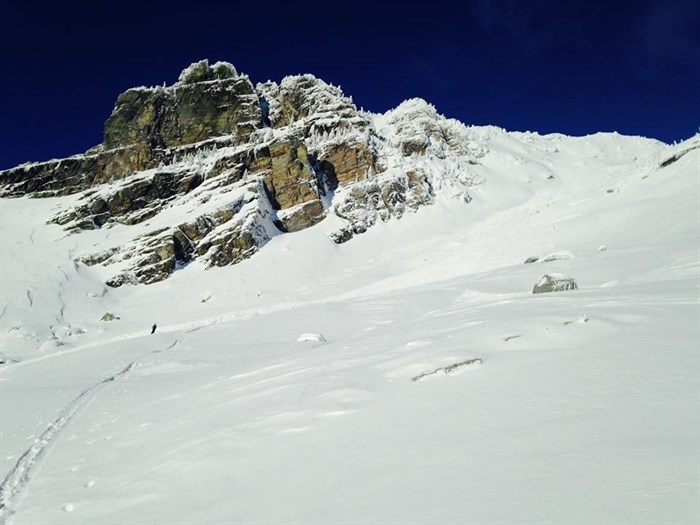
Image Credit: Avalanche Canada
February 24, 2016 - 9:00 PM
THOMPSON-OKANAGAN - Avalanche expert Karl Klassen says going into the backcountry is a lot like getting behind the wheel of a car: you need to use safety equipment, mind the rules of the road and be aware there’s always a certain risk involved.
Instead of seatbelts and speed limits, Klassen, a public avalanche warning service manager with Avalanche Canada, says staying safe in the mountains is all about training, the right gear, and paying attention to avalanche advisories.
There have been several reminders of the importance of avalanche safety so far this year: A snowmobiler was swept away and killed in an avalanche Jan. 23 near Prince George, a large avalanche claimed the lives of five snowmobilers in McBride, and another avalanche took the life of a snowmobiler in Golden Feb. 20. Just a day after the death in Golden, seven skiers were injured in an avalanche northeast of the community.
The same weekend, a group of six snowmobilers went missing near Cherryville, prompting a full scale search by cautious emergency crews mindful of a special avalanche advisory blanketing the region.
Despite the onslaught of tragic news, Klassen says avalanche-related deaths are on a downward trend. According to the B.C. Coroners Service, deaths in this province alone averaged eight per year from 2009 to 2014, compared to 11 from 1999 to 2009.
“We also suspect, based on equipment sales and trail head studies, the number of people in the backcountry has actually increased. If you have more people going out and less fatalities, certainly there is something going right here,” Klassen says. “That doesn’t negate the fact we’ve had some very serious accidents this year and need to do more — not just us but everyone going into the backcountry — to bring that number to zero.”
While you might have thought this year’s El Nino weather pattern led to more snow in the mountains, and therefore more avalanche risk, Klassen says mountain conditions were pretty good up until the end of January, and aren’t really affected by large-scale climatic trends.
“The snowpack changes all the time, it’s a very volatile situation. Sometimes the changes are slow, you don’t see them for weeks. Other times, you can see the changes in minutes or hours depending on the weather and the wind,” Klassen says. “It’s being aware of those changes and not assuming the same place you were an hour ago or a day ago is going to be in the same condition.”
He’s encouraging the public to get some training before going into the backcountry, and to always bring along safety equipment such as avalanche shovels, transceivers, and balloon packs. You should always check Avalanche Canada for alerts prior to embarking as well.
“If you can prevent the accident, you don’t need the gear. But you’re glad to have it if something does go wrong,” Klassen says.
To contact a reporter for this story, email Charlotte Helston at chelston@infonews.ca or call 250-309-5230. To contact the editor, email mjones@infonews.ca or call 250-718-2724.
News from © iNFOnews, 2016